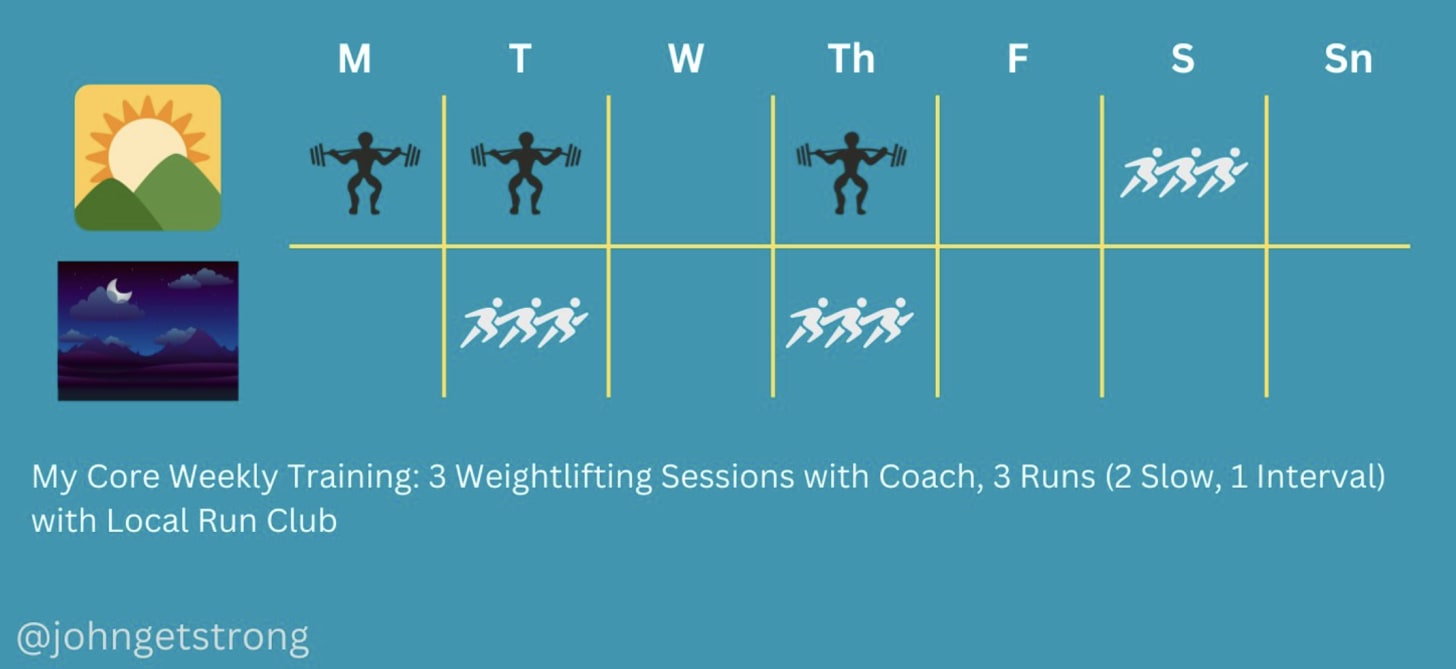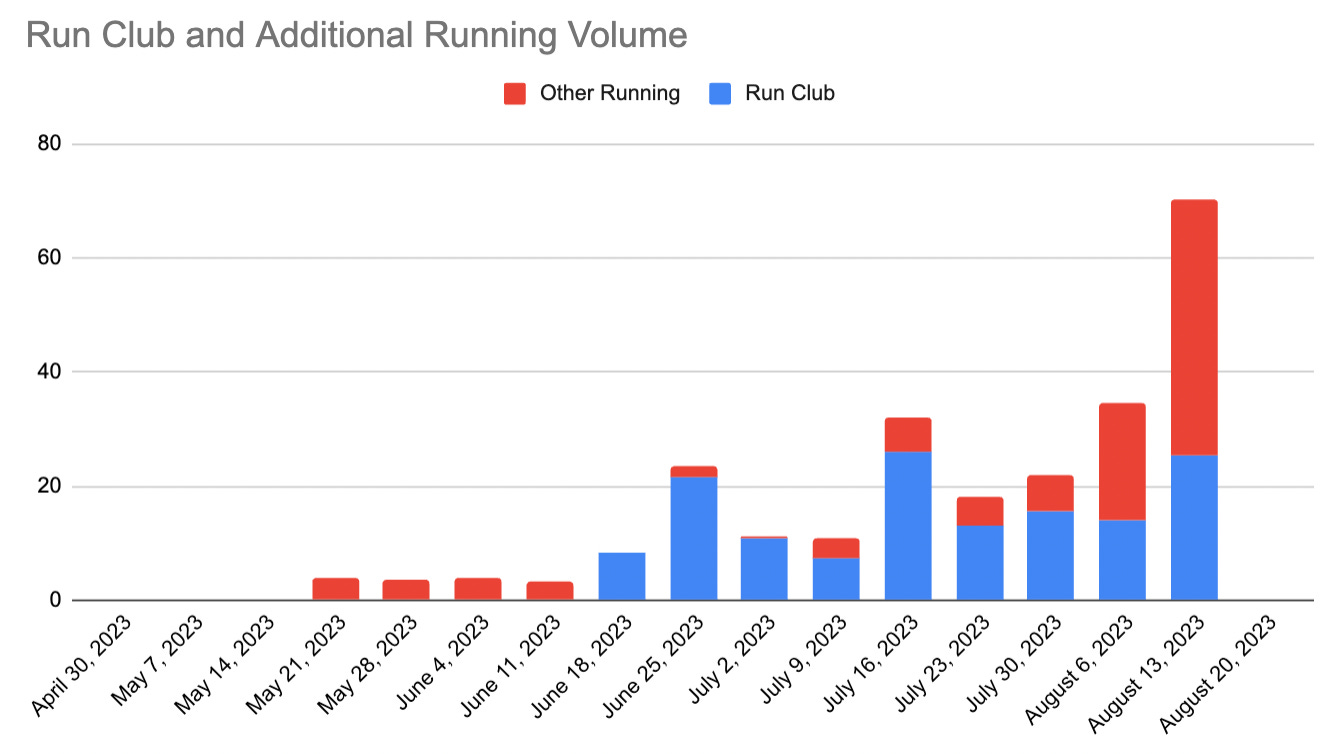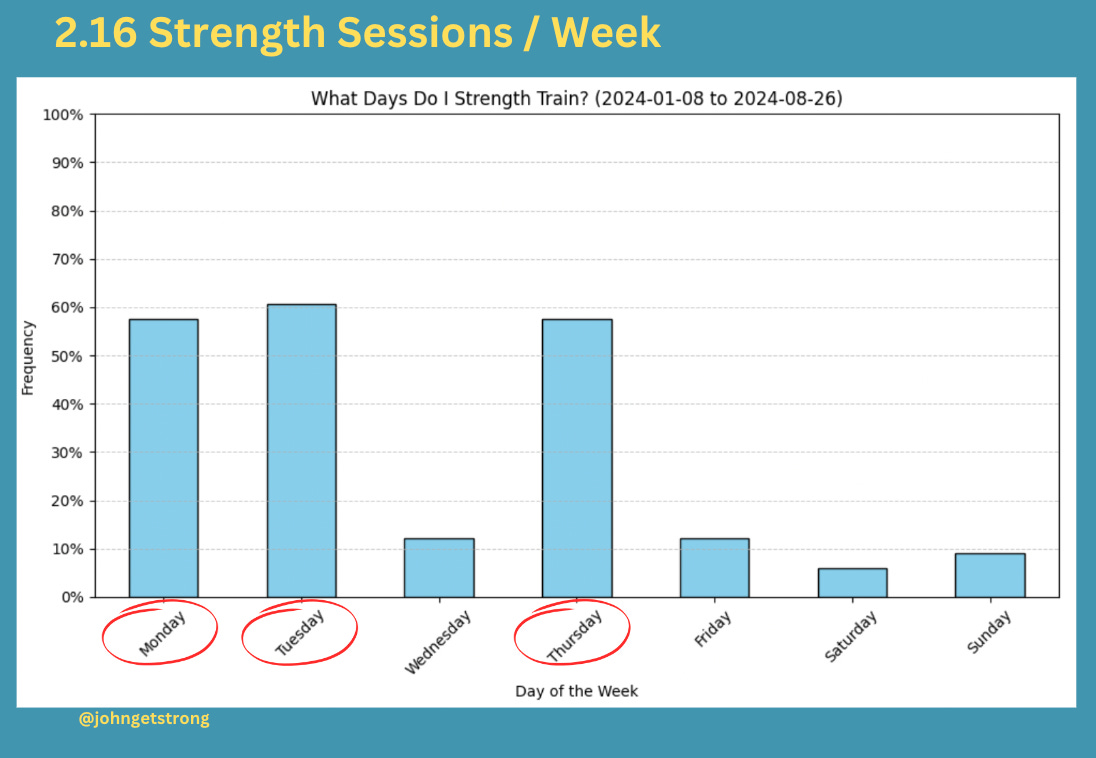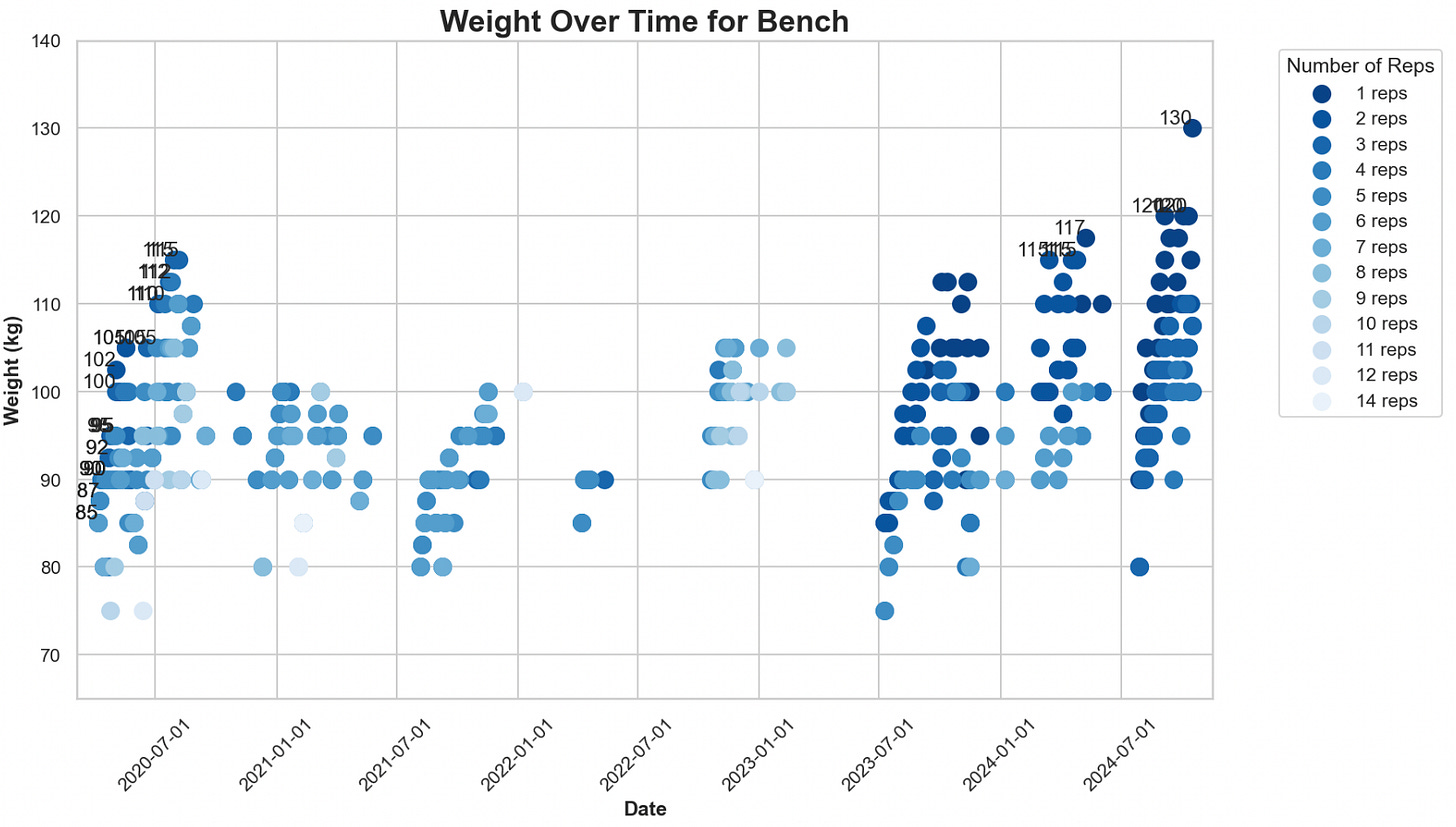How I Actually Train for Strength and Endurance
The Core Sessions That Drive My Weekly Progress
For the past 16 months, I’ve followed a straightforward training strategy to boost both strength and endurance. This approach has helped me achieve a 17:20 personal best in the 5km and a powerlifting total of over 1,000 lb. It’s also the strategy I plan to stick with for the foreseeable future.
Here’s the Strategy
Attend three runs with my local run club each week: Tuesday (easy run) and Thursday (track session) evenings, as well as Saturday (long run) mornings.
Attend three strength training sessions during the “open coaching hours” at my local gym: Monday, Tuesday, and Thursday mornings.
Gradually add additional easy running throughout the week, mostly in the evenings, sometimes at lunchtime, or on weekend mornings.
Slowly add additional strength training sets during the week, typically on Wednesday and Friday mornings.
The three runs with my run club and the three strength sessions during coaching hours serve as the core of the program. That strength volume alone is enough for me to make progress in the gym, while the running volume is sufficient to maintain a solid baseline fitness.

The extra running volume added throughout the week allows me to progress with endurance. Endurance is mainly a volume game, and at least in the base-building stage, the best way to improve is by very slowly increasing low-intensity volume on a regular basis.

The additional strength days on Wednesday and Friday serve two purposes. First, they act as overflow days if I don’t complete the workouts on Monday, Tuesday, or Thursday. I can always shift some volume to these days. Second, they allow me to add extra volume when I want to give a specific strength component more attention.
Adherence
Since the start of the year, I’ve attended at least 70% of the three weekly runs with my run club, with the most consistent being Thursday track sessions (94% attendance).
In addition to these runs, I typically find time for another seven runs each week, bringing my total up to 10 runs per week. These additional runs usually happen in the evenings (five times a week), but I also often run at lunchtime (three times a week) and in the mornings (twice a week). Weekly volume has averaged 66 km this year, with most runs being under 5 km.
I’ve been slightly less consistent with strength training, attending the open coaching sessions about 60% of the time. The spillover days on Wednesday and Friday are used infrequently (about 12% of the time), with some very rare strength work on weekends (less than 10% of the time). This averages out to 2.16 strength sessions per week.

Evaluation
Even though attendance hasn’t been perfect, this plan has been more than sufficient for me to see significant progress this year. I’ve improved at every running distance and progressed in every lift.

Here’s Why I Think It Has Worked:
Enjoyment: I enjoy the core running sessions with the run club, which has helped me stay consistent and make friends.
Structured Strength Training: The core strength sessions have enabled solid intensity and consistency. I often find it easy to skip strength training, but training with my coach has made it much easier.
Form Feedback: I get real-time feedback on my technique, which is invaluable for such a technical activity.
Motivation: It can be tough to push yourself to a true RPE 8/9 set (one or two reps before failure). Having a coach observe and support me during these key sets is crucial.
Accountability: It’s easy to second-guess a training program or make excuses, but having an in-person coach helps me stay committed. I can ask questions in real time, increasing my buy-in.
Flexibility of the Strategy: There are 21 possible training opportunities each week: morning, lunch, and evening, seven days a week. My plan covers just six of those blocks, leaving 15 open for additional training based on how I feel. This flexibility allows me to add volume when I’m ready, instead of feeling restricted by a rigid system.
The progress is still ongoing, and I plan to stick with this general strategy until the gains start to slow down or plateau. Hopefully, this base-building phase for strength and endurance will continue for a long time to come!
What’s working best in your current training strategy? Or is there something from my approach that you might incorporate into your own routine? I’d love to hear your thoughts—feel free to share them in the comments below!








Hi John
Good stuff here. Curious about rest days as not mentioned.. are you programming any full rest days in weekly or happy with active recovery and full days off based on feeling?
Also I know I saw, perhaps more recently, you focused on a specific strength focused block of training.. did you do different blocks through this 16 month period or just keep a regular routine?
Thanks!
E
I'm fascinated by this sentence "Weekly volume has averaged 66 km this year, with most runs being under 5 km." I was under the impression that zone 2 needed to be 30 mins minimum to be effective - but you're doing a lot of training under that time limit I assume and it sill is working to increased volume/zone 2 training effect?